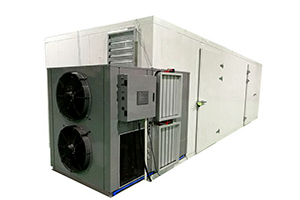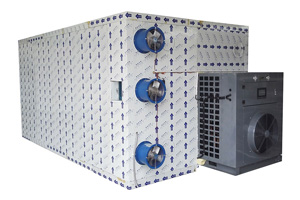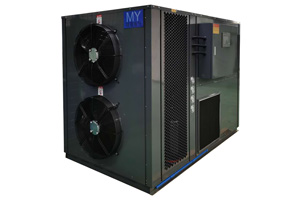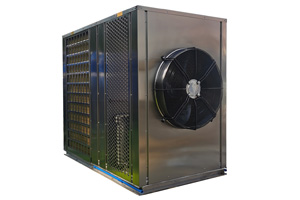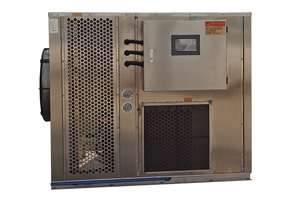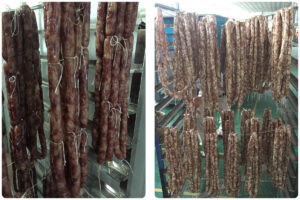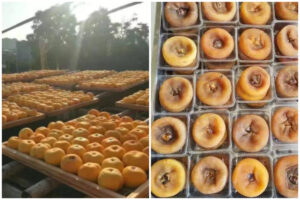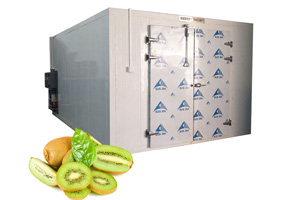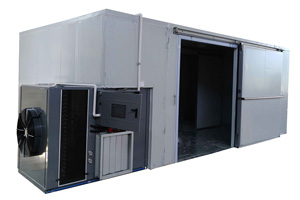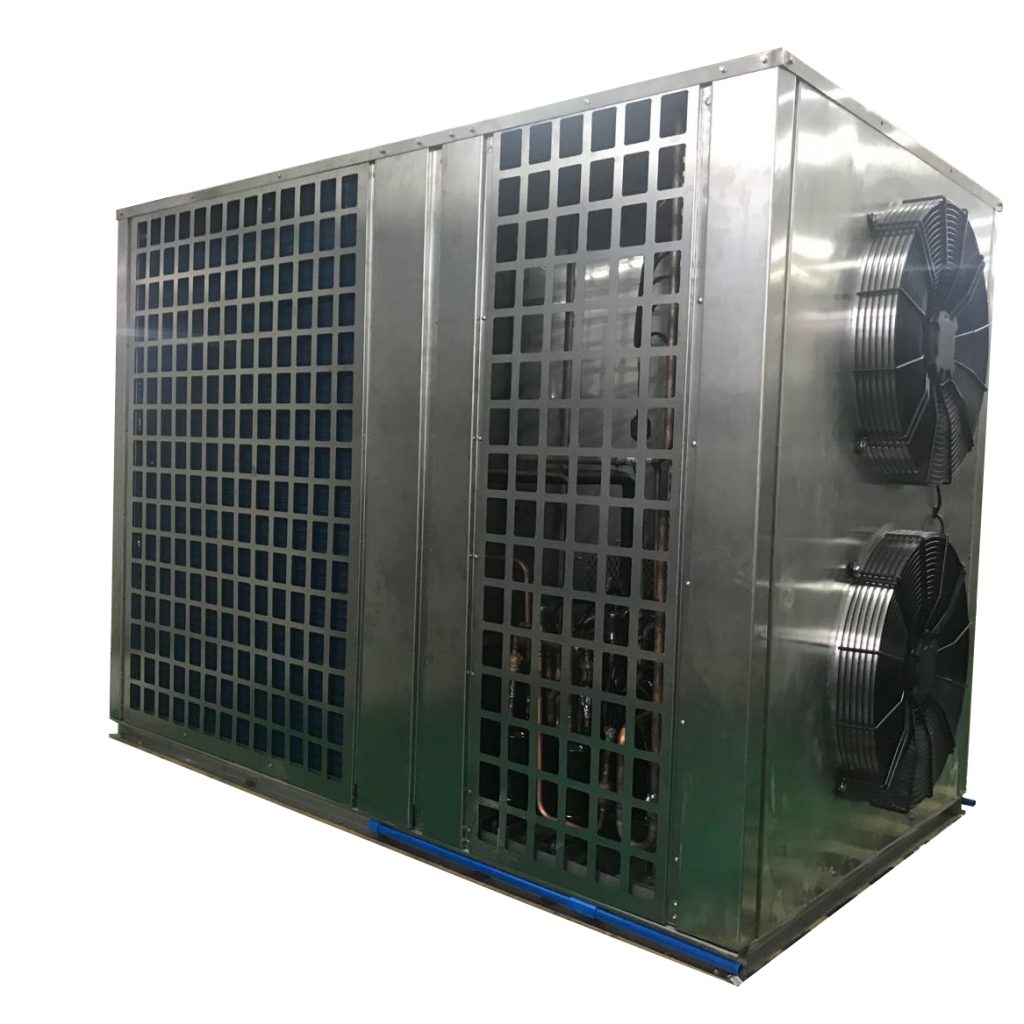
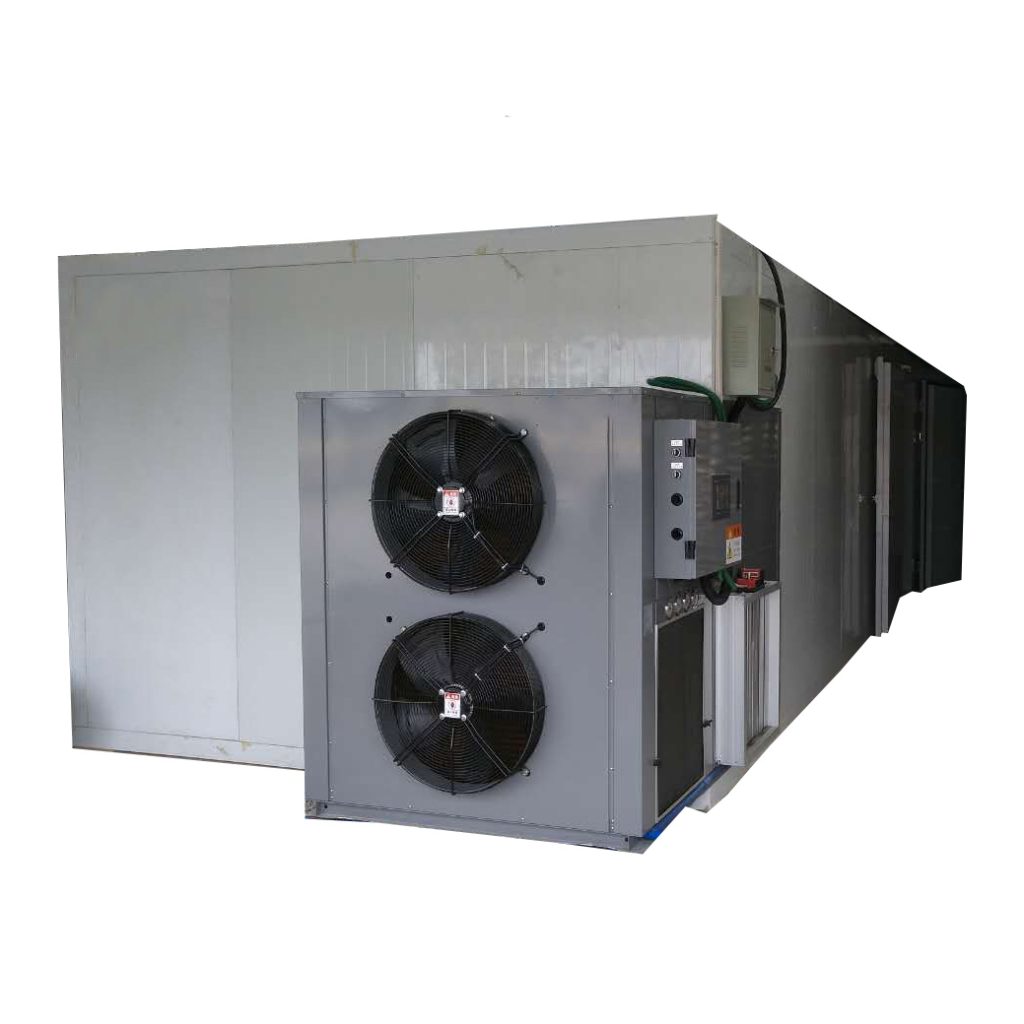
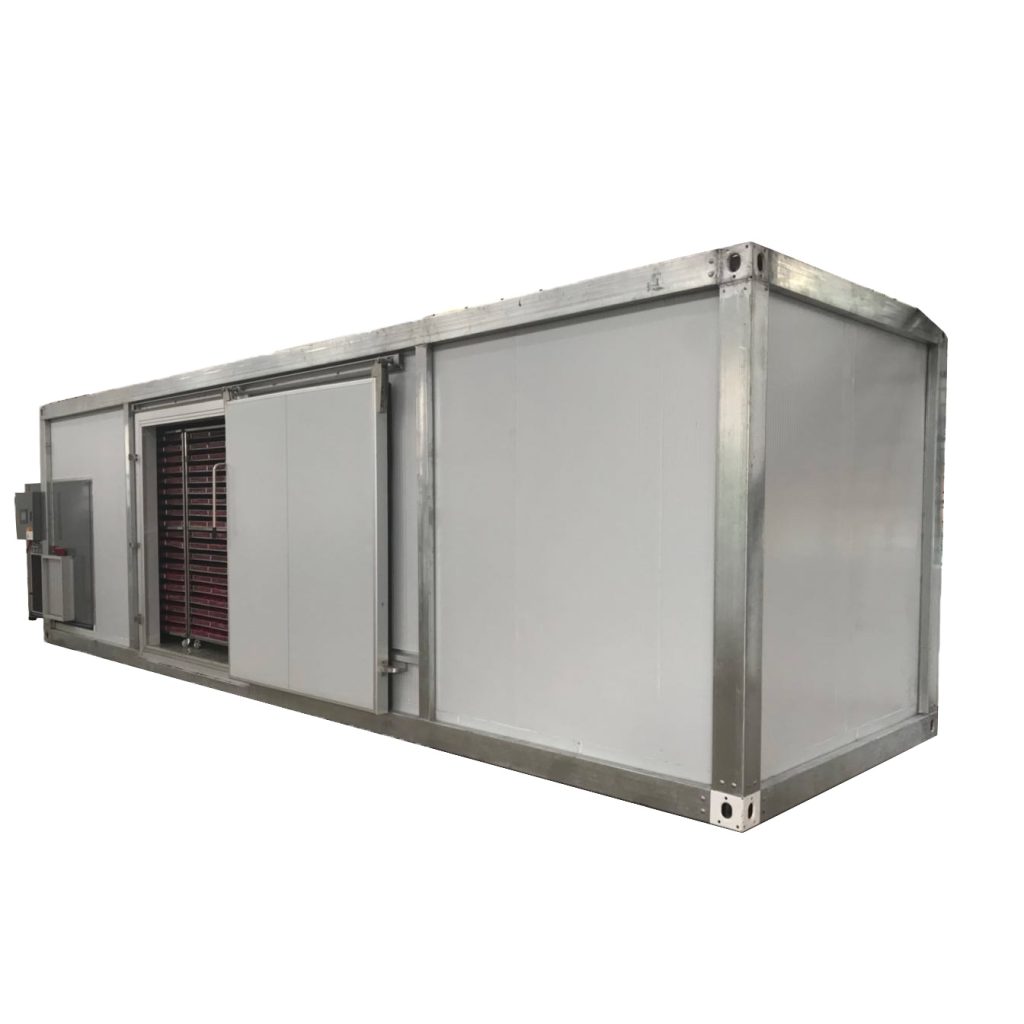
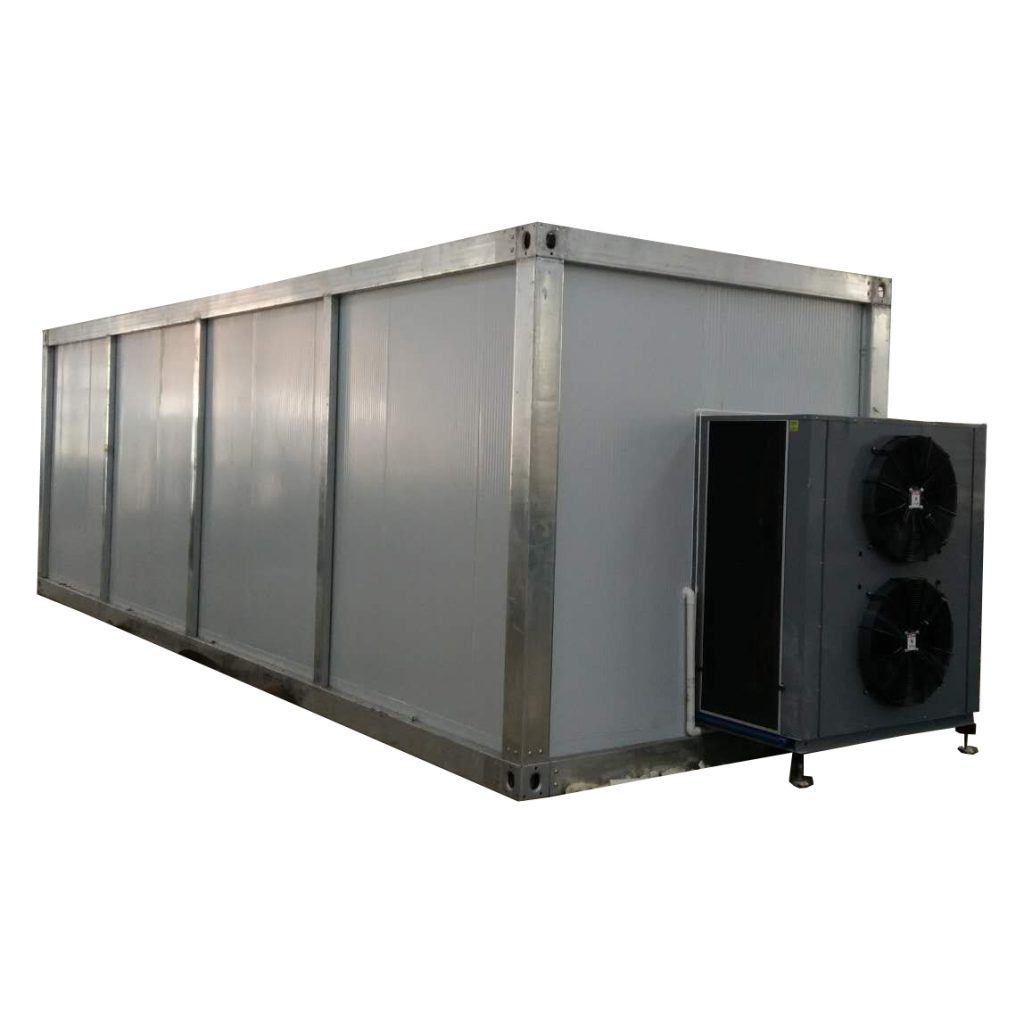
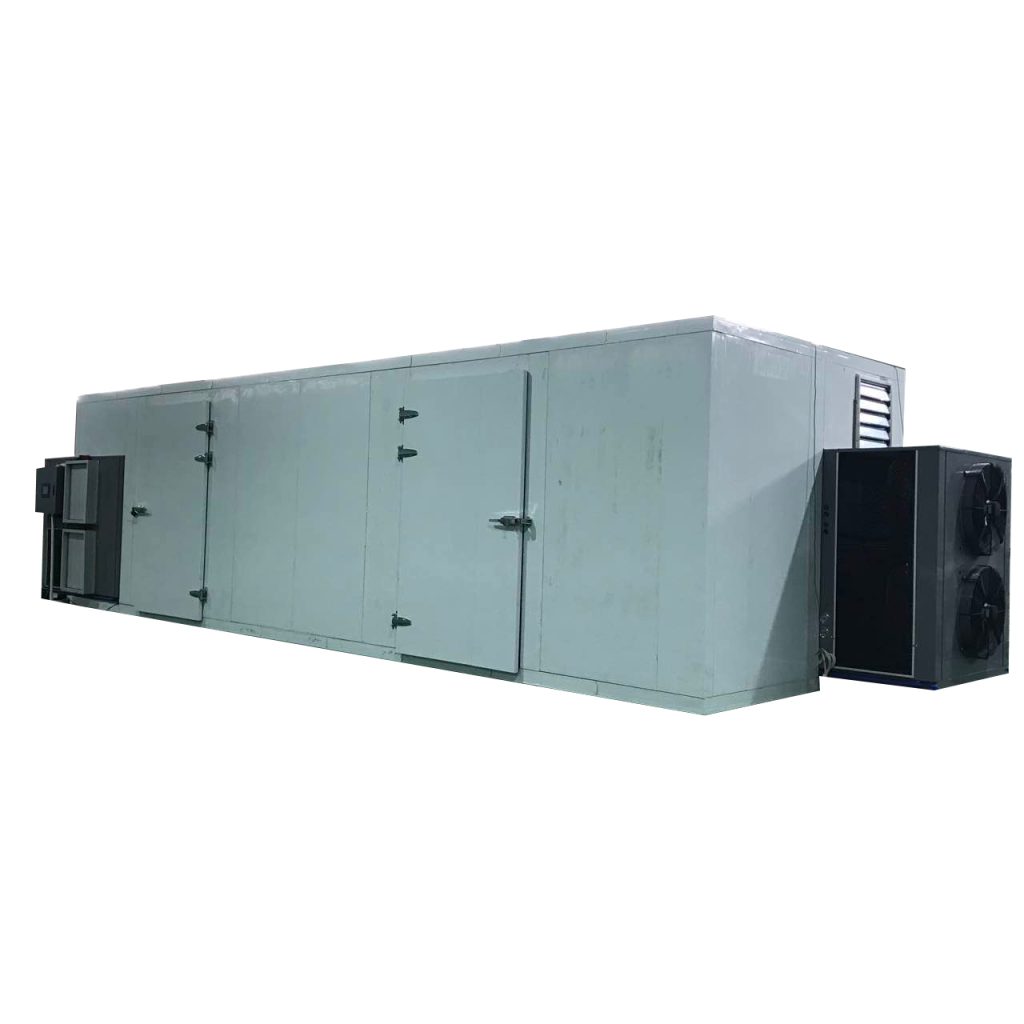
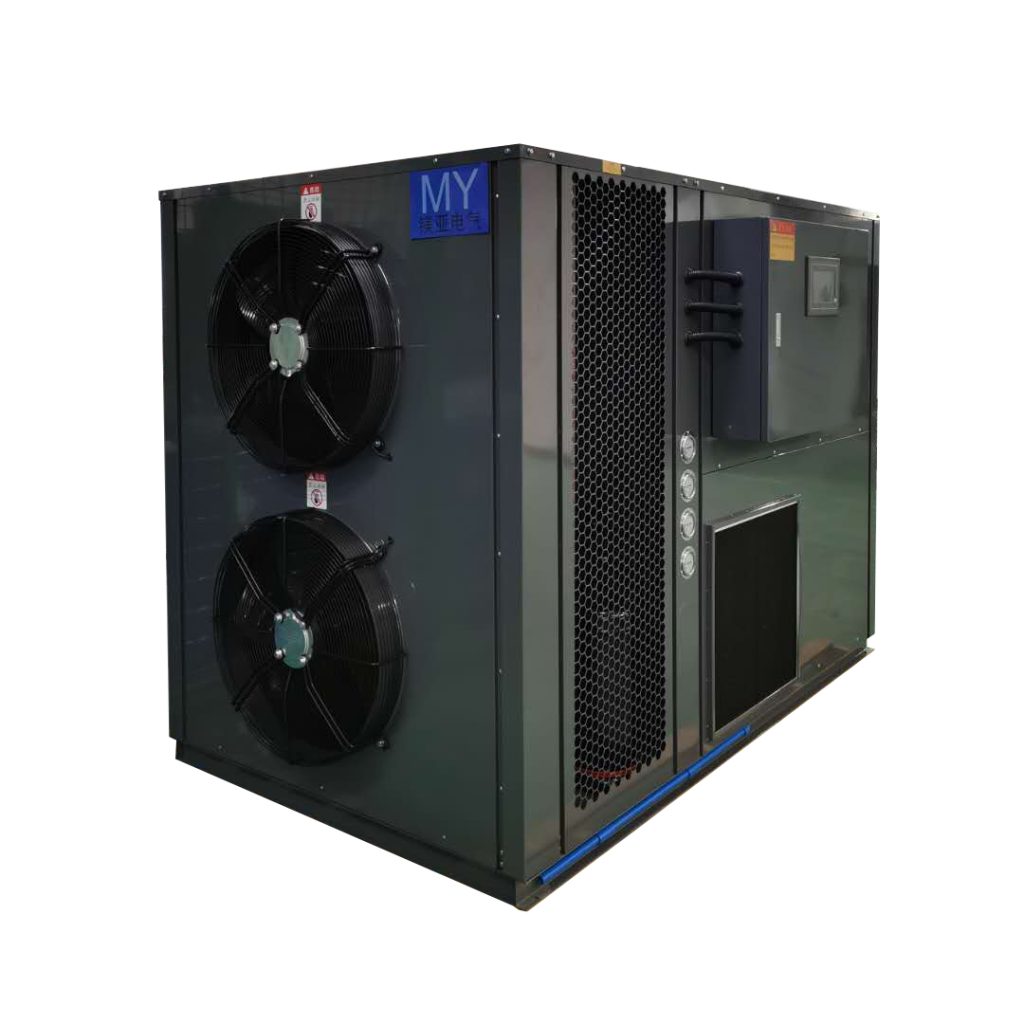
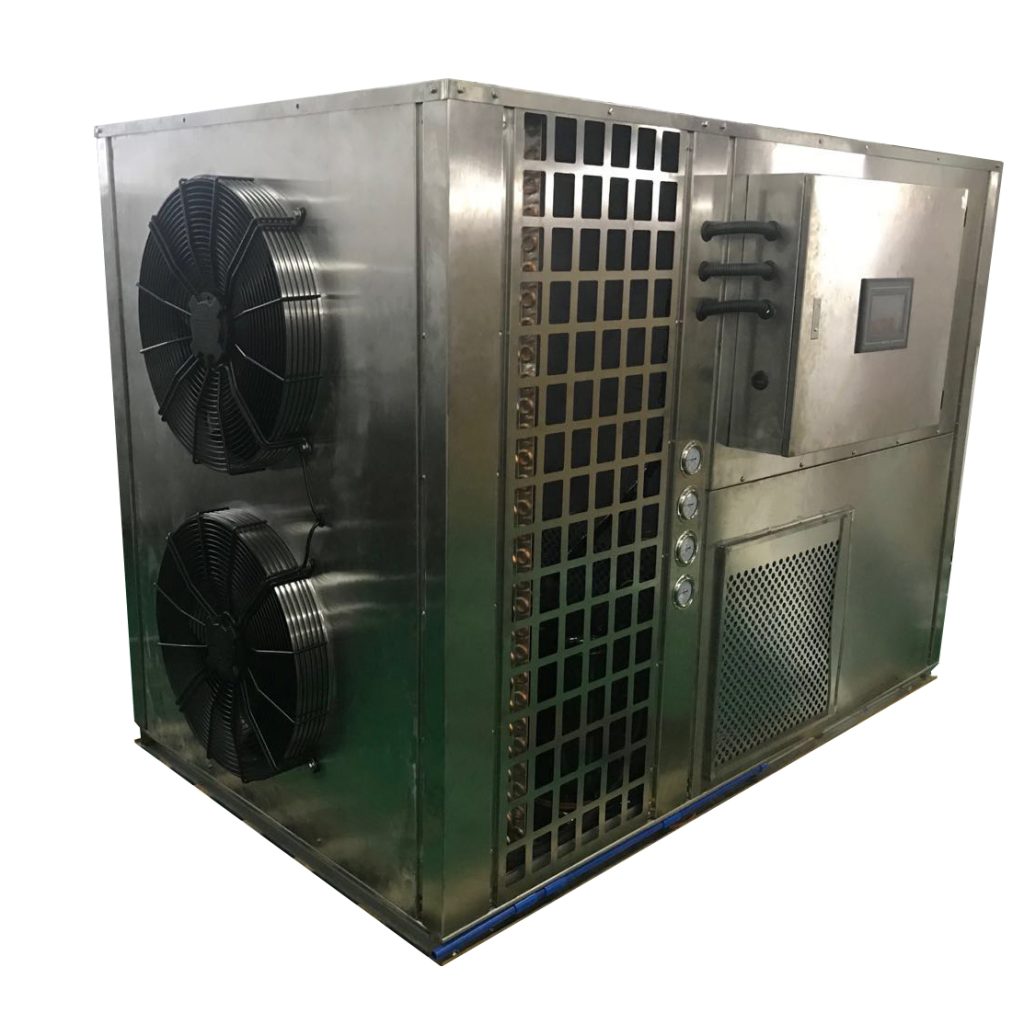
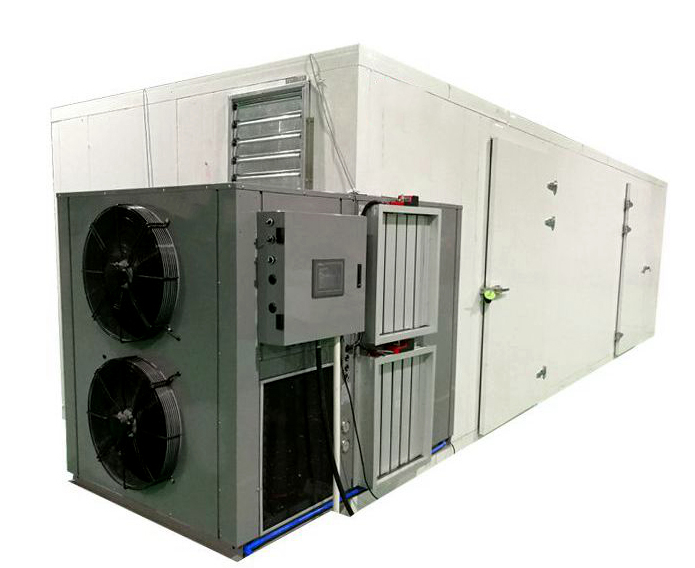
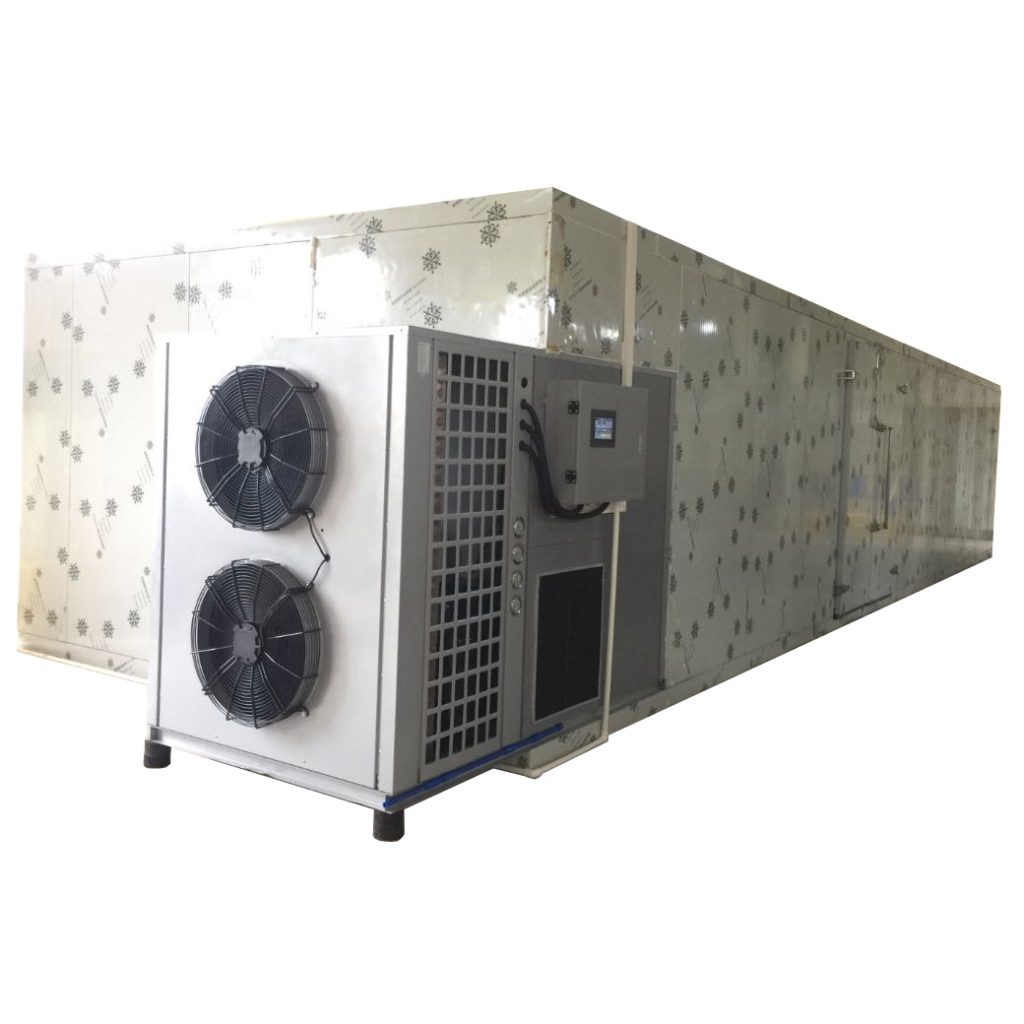
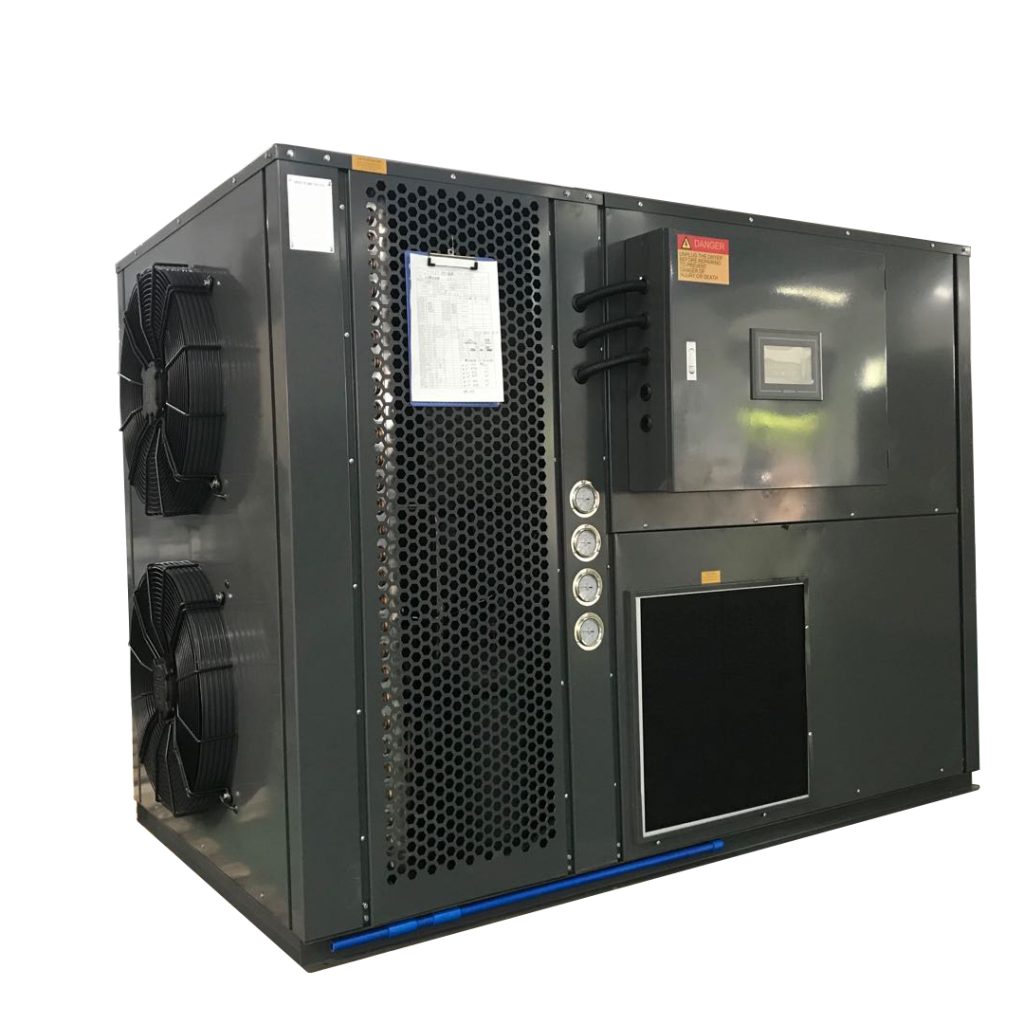
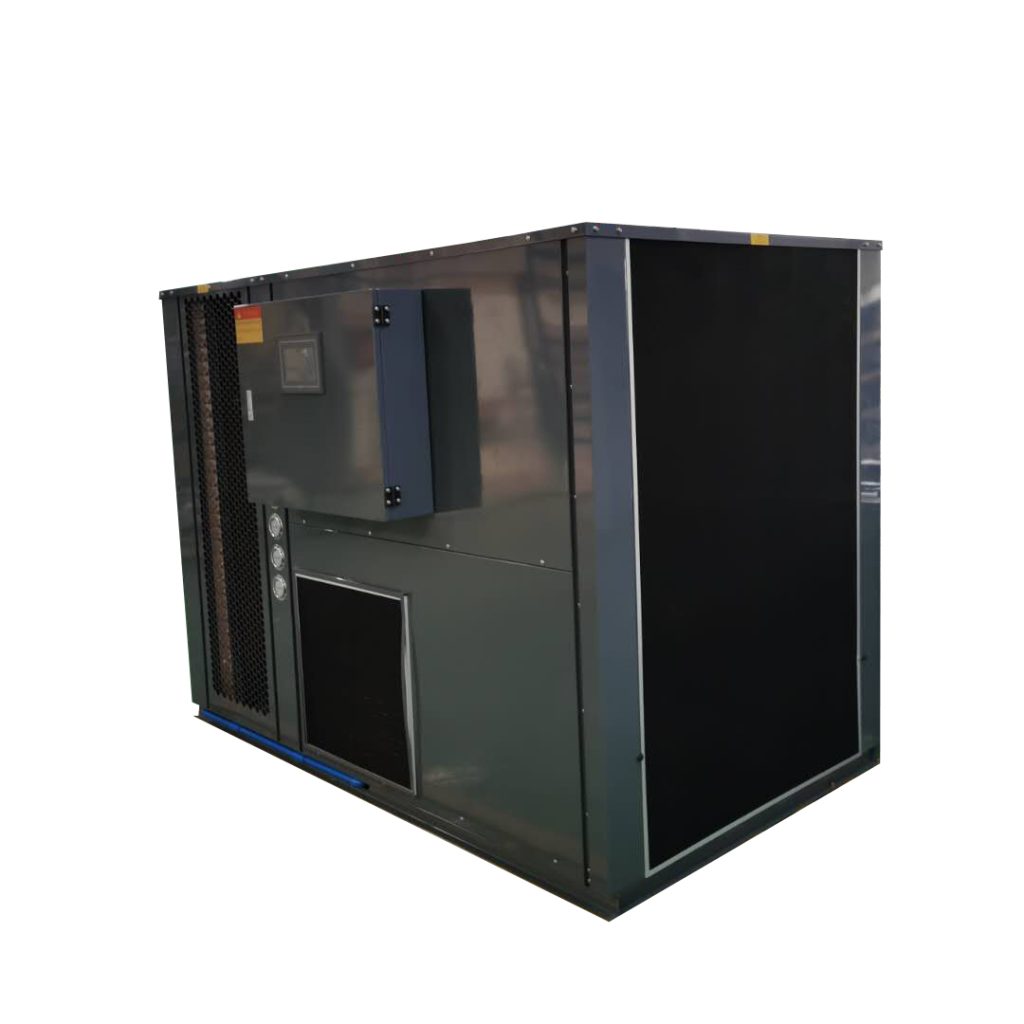
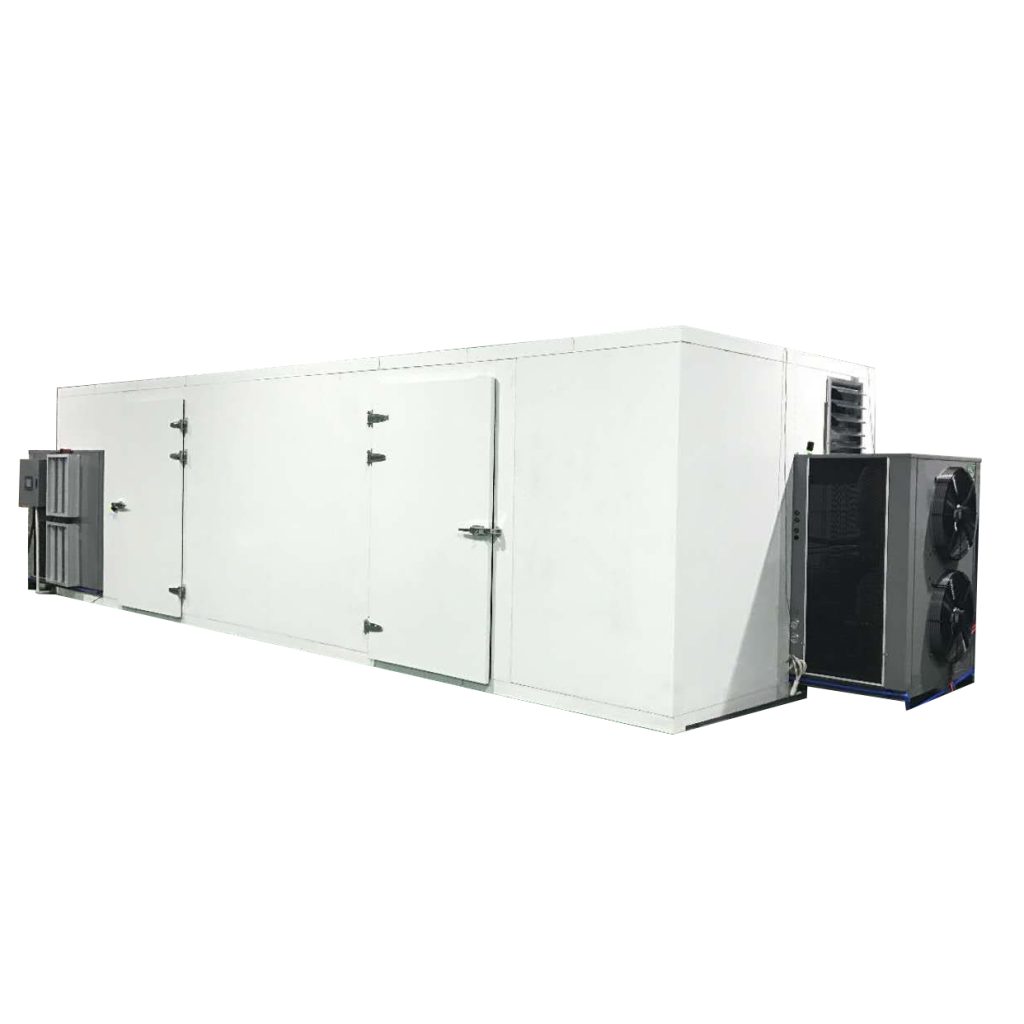
Product Description:
MeiYa Heat Pump Drying Machine
Commercial-Grade Multi-Food Dehydrator: Energy-Efficient Seafood, Fish & Onion Drying Machine
Elevate your food processing capabilities with the MeiYa Commercial-Grade Multi-Food Dehydrator—a versatile, high-performance solution engineered to meet the rigorous demands of dehydrating seafood, fish, onions, and diverse perishable goods. As the global commercial food dehydrator market grows at a 3.6% CAGR (2024–2030), MeiYa’s innovation stands at the forefront, combining energy efficiency, precision, and scalability to align with industry trends like sustainability and reduced food waste.
Why MeiYa’s Dehydrator Dominates the Market
- Energy Efficiency & Sustainability
MeiYa’s heat pump technology reduces energy consumption by 70% compared to conventional dryers, leveraging heat recovery systems and low-temperature drying. This aligns with global sustainability goals, minimizing carbon footprints while meeting the demand for eco-conscious production. - Multi-Food Versatility
Designed for seafood (e.g., salmon, shrimp), fish, onions, herbs, and fruits, the dehydrator features adjustable trays and customizable airflow settings. Its stainless steel chambers ensure hygienic processing, critical for sensitive products like seafood and vegetables. - Precision Control for Optimal Quality
Advanced humidity sensors and a touchscreen interface allow operators to fine-tune drying cycles, preserving texture, flavor, and nutrients. Uniform drying prevents spoilage, crucial for high-value exports like dried fish and onion flakes. - Commercial-Grade Durability
Built with 50mm polyurethane insulation and corrosion-resistant materials, MeiYa’s dehydrator withstands harsh environments, ensuring longevity for 24/7 operations in food processing plants or fisheries. - Automation & Scalability
Programmable batch cycles, remote monitoring, and modular designs (up to 1152 trays) cater to facilities processing 300kg–5 tons daily, supporting the growing demand for ready-to-eat snacks and preserved ingredients.
Market-Driven Innovation
The commercial dehydrator market, valued at $1.2 billion in 2023, is driven by:
- Health-Conscious Consumers: Demand for additive-free, nutrient-rich dried foods.
- Food Waste Reduction: Dehydration extends shelf life, aligning with global sustainability initiatives.
- Automation Trends: MeiYa’s smart systems reduce labor costs and errors, critical for competitive markets like seafood processing.
Applications
- Seafood & Fish: Produce shelf-stable snacks or ingredients for soups and seasonings.
- Onions & Vegetables: Create flakes or powders for culinary and retail markets.
- Custom Projects: Collaborate with MeiYa’s engineers for tailored solutions (e.g., hybrid drying for exotic ingredients).
Why Invest in MeiYa?
- ROI Focus: Slash energy and maintenance costs by 40–60% annually.
- Compliance: Meets HACCP, CE, and international export standards.
- Future-Proof Design: Adaptable to emerging trends like plant-based snacks and functional foods.
Join the Global Shift Toward Efficient Dehydration
With the commercial dehydrator market projected to reach $1.61 billion by 2030, MeiYa empowers businesses to scale sustainably.
Contact us today to explore how our technology can transform your production line!
Working Principle:
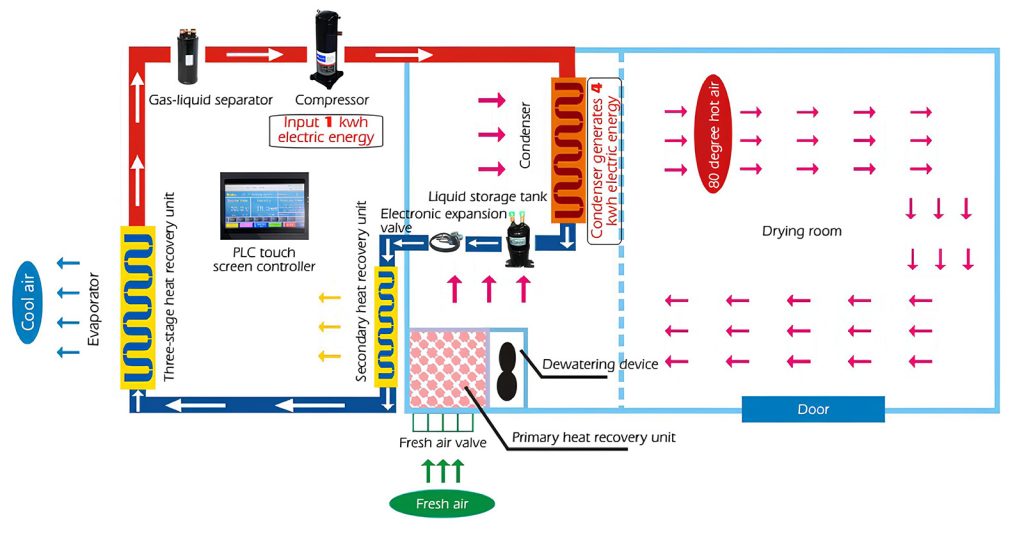
- No MOQ & Customization Unlimited
- Drying + Dehumidify + Cooling
- PLC + Touch Screen Control
- 7-10 Days Delivery Time
Parameter:
| Single dryer+drying chamber | ||||
| Model | Unit | MY-03RD | MY-06RD | MY-12RD |
| Power input | KW | 5.5 | 9.5 | 19.4 |
| power supply | V/PH/HZ | 380V/3PH,50/60HZ | 380V/3PH,50/60HZ | |
| 220V/1PH,50/60HZ | ||||
| Rated current | A | 9.6A(380V),22A(220V) | 17.0 | 30.0 |
| Heating capacity | KW | 10.5 | 21.0 | 42.0 |
| Cooling capacity | KW | 7.8 | 18.0 | 32.0 |
| Dehumidity | L/H | 12.0 | 25.0 | 50.0 |
| Max temperature | ℃ | ≤75 | ≤75 | ≤75 |
| Working condition | ℃ | 0-43 | 0-43 | 0-43 |
| Electric shock protection grade | 1 | 1 | 1 | |
| Max exhause pressure | M(P)a | 30 | 30 | 30 |
| Noise | d(B(A | 75 | 75 | 75 |
| Power consumption/H | KWH | 4.8 | 8.5 | 15.0 |
| Electric heater | KW | 3.0 | 6.0 | 12.0 |
| Blowing type | / | HORIZONTAL BLOWING TYPE | ||
| Demsnssion of dryer | MM | 3160*2070*2200 | 5700*2170*2200 | 5810*3230*2200 |
| Weight | KG | 180 | 285 | 480 |
Buying Guiding:
Recommend drying machine+Drying chamber sizes
| ITEM | DESCRIPTION | PRODUCT CAPACITY | DRYING CHAMBER SIZE |
| 1 | One unit MY-03RD+Drying chamer | 300/batch | 4000*2000*2200 |
| 2 | One unit MY-06RD+Drying chamer | 600/batch | 6000*2800*2200 |
| 3 | One unit MY-12RD+Drying chamer | 1300/batch | 6000*3000*2200 |
| 4 | Two unit MY-03RD+Drying chamer | 1200/batch | 7000*2200*2200 |
| 5 | Two unit MY-06RD+Drying chamer | 1500/batch | 10000*2800*2200 |
| 6 | Two unit MY-12RD+Drying chamer | 3500/batch | 10000*3000*2200 |
Our Projects:
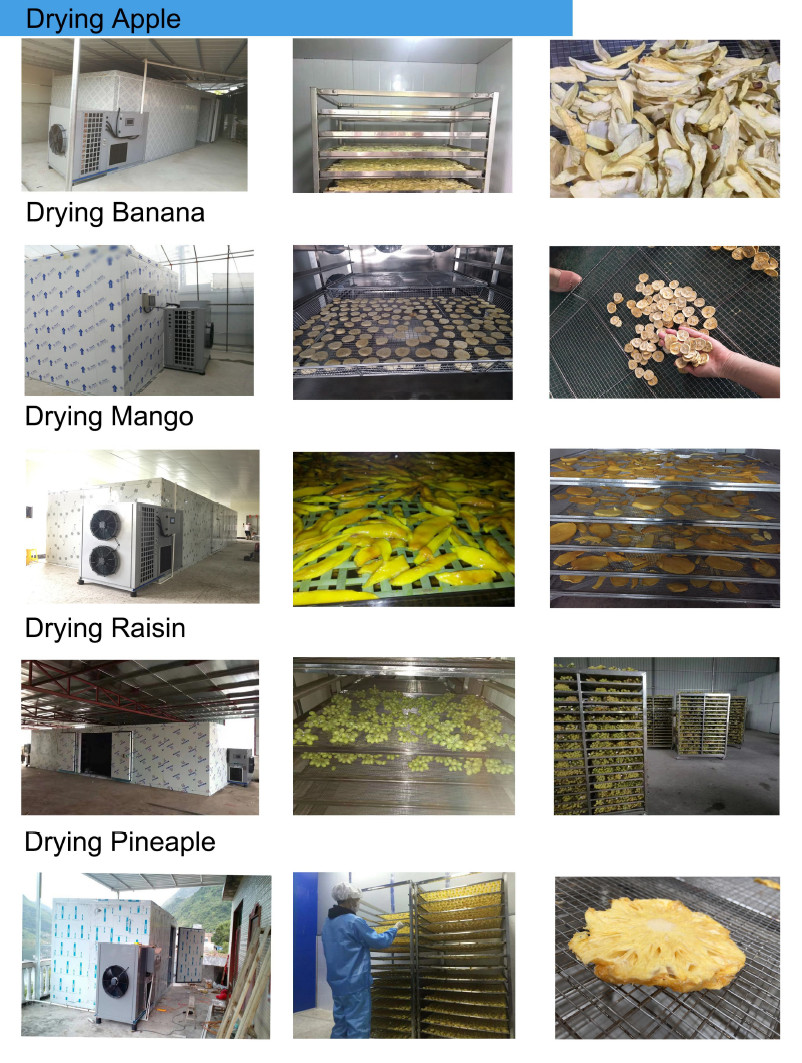
Our Factory:
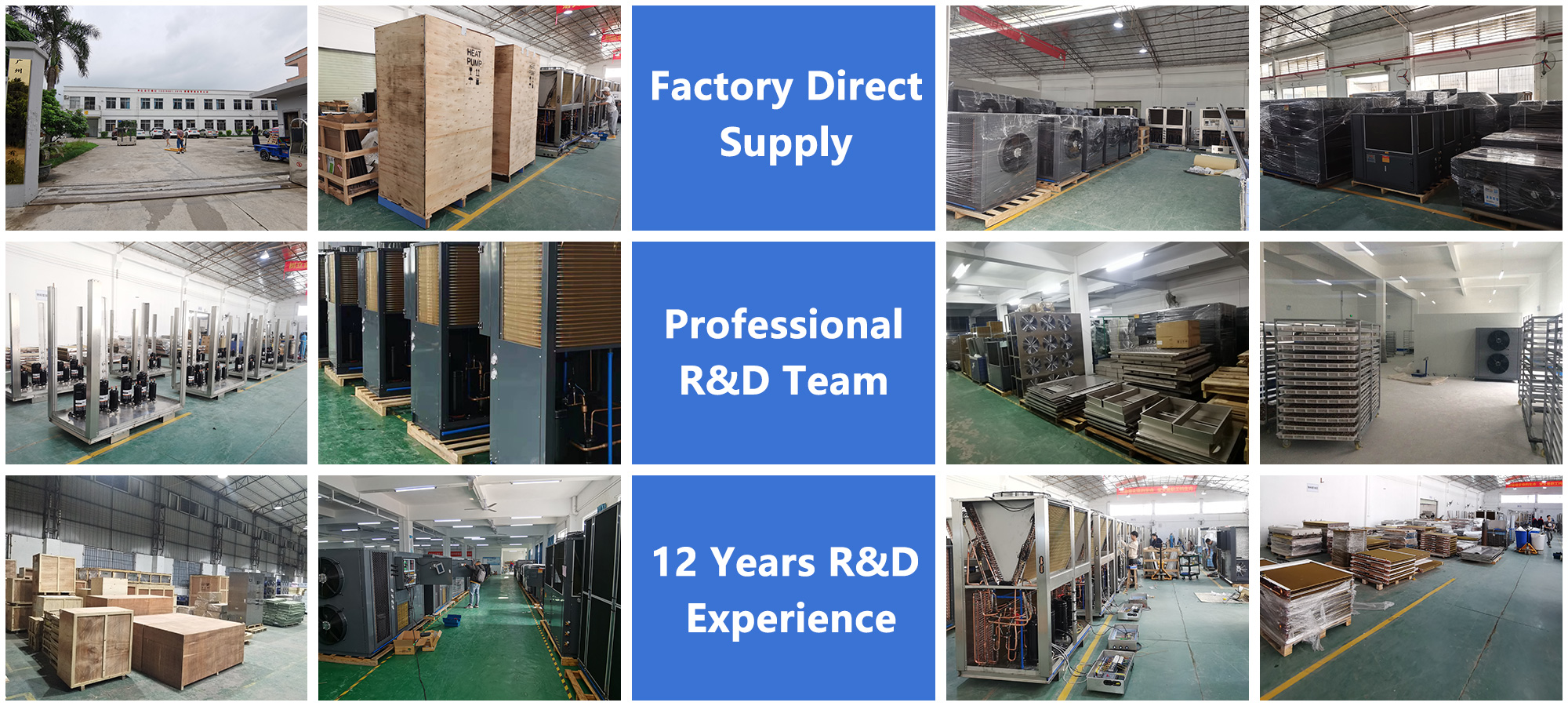
Production Processing:
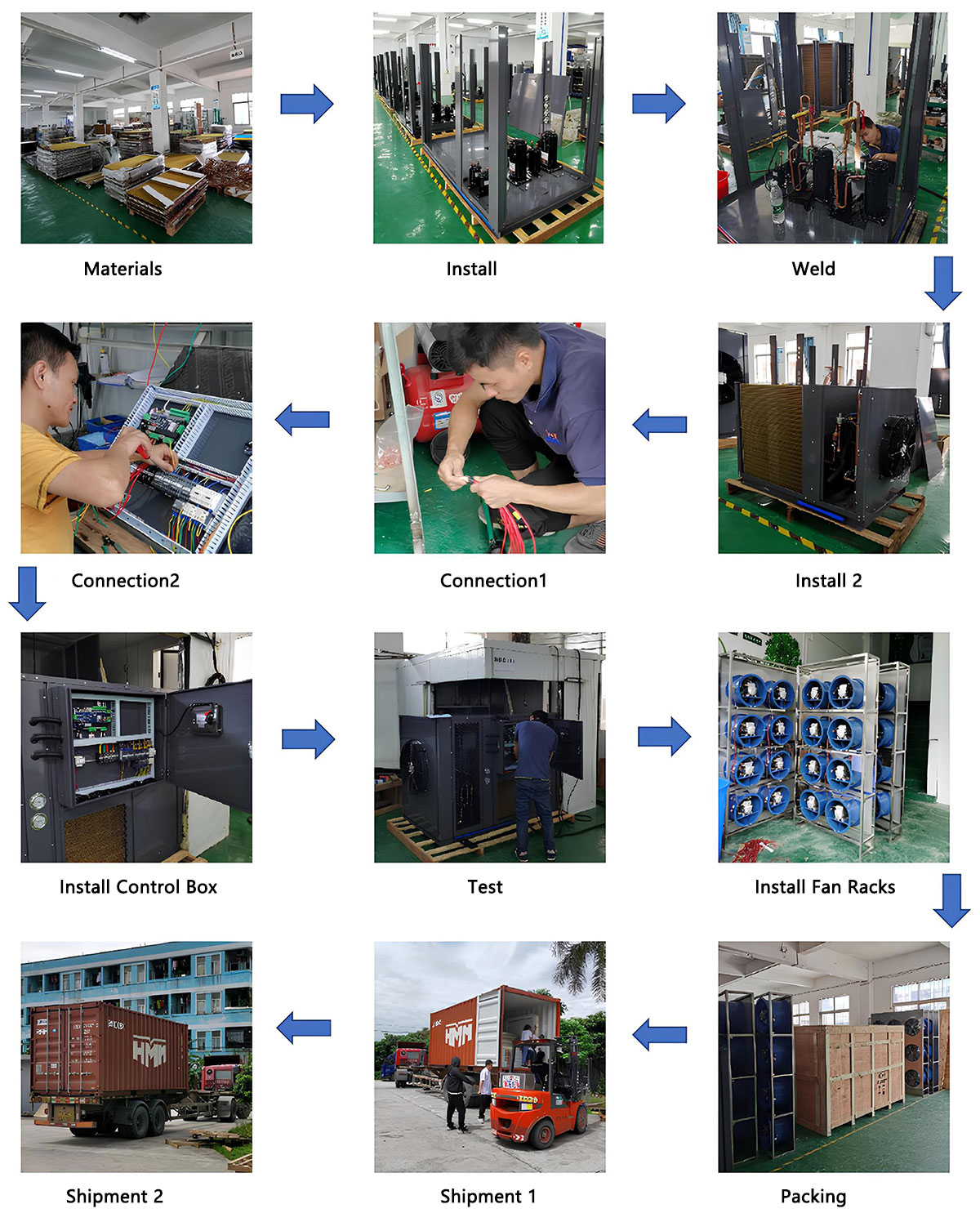
Drying Machine Components:
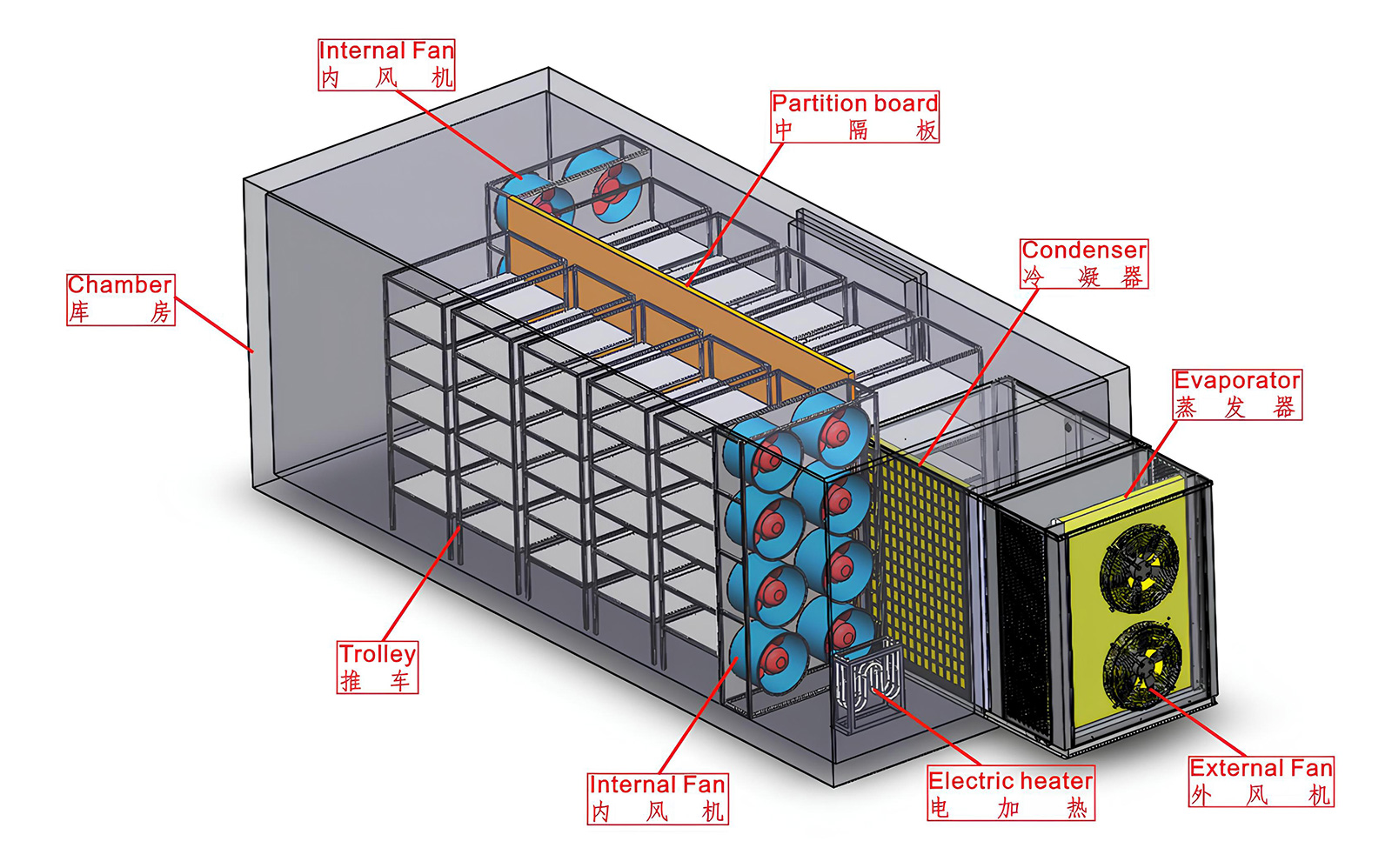
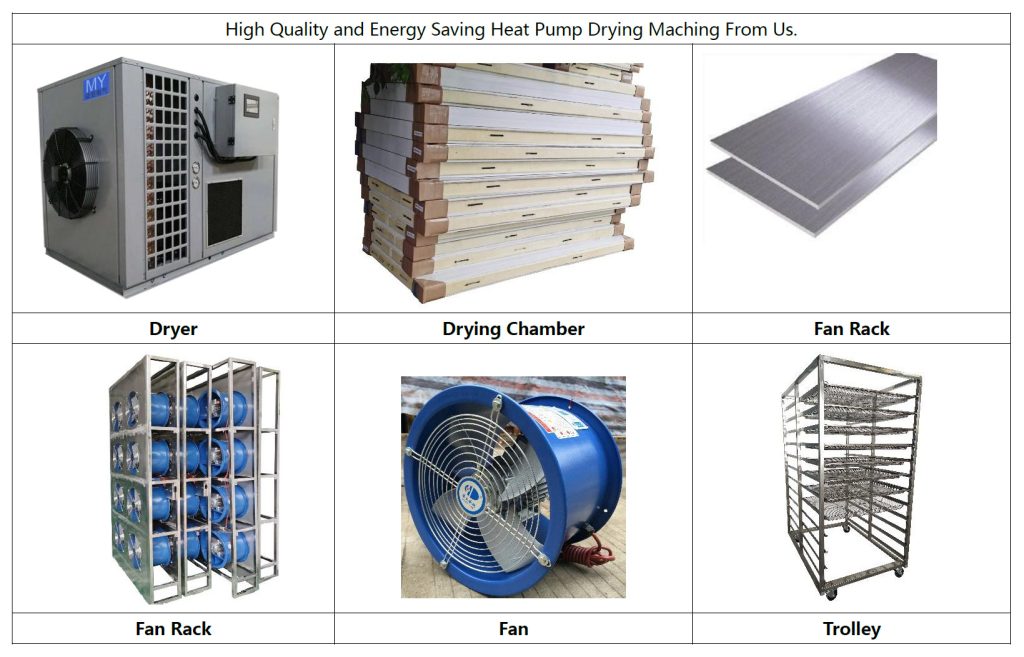
Standard Working Modes:
- Typically 3 modes available:
- Drying Only
- Rapid temperature rise; unable to discharge moist air
- Drying + Dehumidify
- Chamber temperature rises while discharging moist air
- Cooling
- Temperature can drop to 10°C (minimum)
- Important Note:
- If temperature control becomes unstable, switch to Temperature & Humidity Mode.
Drying Machine Common Issues
- Q1: High Pressure Protection
- A1.1: Hot air circulation system failure
- ▪ AC contactor overload protection
- (Check phase loss/loose terminals/voltage instability)
- ▪ Partial fan failures
- (Verify switches configuration and burnt components)
- ▪ Mechanical fan damage
- (Replacement or removal required)
- A1.2: Tray overloading phenomenon
- Optimal spacing: 8-10cm between trays
- (Causes airflow obstruction in drying chamber)
- A1.3: Electronic expansion valve anomalies ▪ Automatic minimum aperture adjustment
- (Sensor calibration: Reposition or exchange Sensor 1/2) ▪ Valve body malfunction
- (Manual rotation intervention needed)
- A1.4: Chamber overheating condition
- (Temperature parameter adjustment solution)
- A1.5: Refrigerant specification error
- (High-temperature type gas recharge required)
- Q2: Low Pressure Protection
- A2.1: Gas leakage scenario
- (Leak detection and repair protocol)
- A2.2: Extreme cold environment
- (Extended check intervals or R22/R417A refill)
- A2.3: Valve aperture deficiency
- (Expansion valve opening adjustment method)
- Q3: Exhaust Temperature Overload
- A3.1: Gas leakage recurrence
- (Refers to Q2.1 resolution process)
- A3.2: Valve operational failure
- (See A1.3.2 corrective action)
- Q4: Sensor Malfunction
- A4.1: Temperature sensor defect
- (Replacement procedure guidelines)
- Q5: Moisture Evacuation Failure
- A5.1: Dehumidification fan damage
- A5.2: Control system malfunction
- A5.3: Power delivery irregularity
Our Services
A. Payment Service
- T/T (Telegraphic Transfer)
• Applicable to all transaction types. - L/C (Letter of Credit)
• Exclusively available for container orders. - Western Union
• Recommended for sample orders and spare parts procurement.
B. Technical Service
- Capacity Analysis & Model Recommendation
• We provide customized capacity calculations and optimal model selections based on operational requirements. - Professional Technical Support
• Comprehensive refrigeration and electronic engineering assistance for installation, debugging, and system operation. - Spare Parts & Post-Warranty Support
• Genuine spare parts and technical guidance provided during and after the warranty period. - Training Programs
• On-site or factory-based training courses available upon request.
C. After-Sales Service
- Technical Assistance
• Continuous support for installation, operation, and maintenance. - Warranty Policy
• 12-month warranty coverage with optional extension. - Cost-Effective Post-Warranty Support
• Spare parts and technical services offered at competitive rates after warranty expiration.

